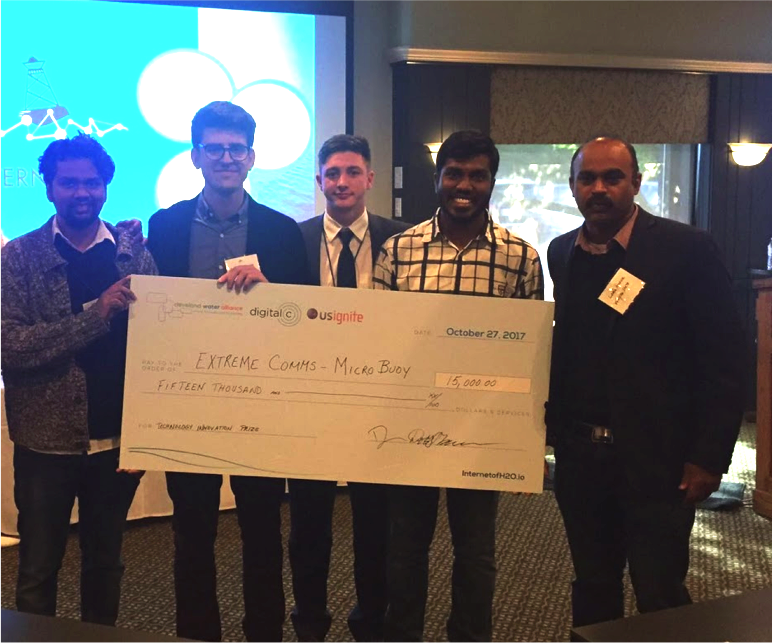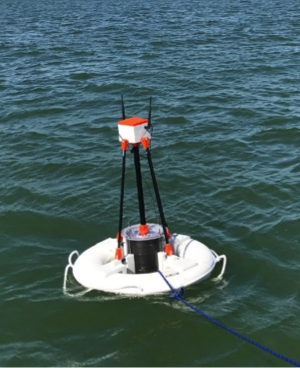MicroBuoy team awarded for innovation at Internet of H2O competition
 A research team representing the Wayne State University College of Engineering received the Technology Innovation Award and a $15,000 cash prize plus supportive services at the Internet of H2O water innovation competition, hosted by the Cleveland Water Alliance on Oct. 27 in Port Clinton, Ohio.
A research team representing the Wayne State University College of Engineering received the Technology Innovation Award and a $15,000 cash prize plus supportive services at the Internet of H2O water innovation competition, hosted by the Cleveland Water Alliance on Oct. 27 in Port Clinton, Ohio.
The "MicroBuoy" team, mentored by Leela Arava, assistant professor of mechanical engineering, collaborated with the "Extreme Comms" team from the University of Buffalo. They were among five groups tasked with developing a solution for real-world challenges associated with monitoring phosphorus and other harmful nutrients in Lake Erie, and establishing the first "Smart Lake" by integrating sensors, advanced networking and data analytics.
Members representing the MicroBuoy team included Ph.D. candidate Nirul Masurkar and master's student Uday Praveen.
Last spring, MicroBuoy and Extreme Comms finished first and second, respectively, at Erie Hack, a months-long water innovation accelerator and competition focused on creating publicly accessible technology to elevate the value of clean water and foster the potential to invigorate environmental and economic vitality in the Great Lakes region.
MicroBuoy uses aquatic sensor technology to assess water quality in real time. A nanosensor contained inside a buoy can continuously measure for environmental contaminants. The device contains nano-sized batteries that can be recharged with solar energy. These batteries can also be inserted into faucets to detect lead and other contaminants.
 As further proof of their concept, the team deployed the buoys in Lake Erie three times from late September to mid-October.
As further proof of their concept, the team deployed the buoys in Lake Erie three times from late September to mid-October.
Another group with Wayne State representation was aqInfo, a low-cost, cloud-based modular sensor network that offers users access to secure data analyzed through machine-learning models to classify anomalies. The aqInfo team includes Jack Press, a graduate teaching assistant in civil and environmental engineering; Dillon Fitzgerald, a physics research assistant; and software engineer Greg Good.
The goal of the Internet of H2O competition was to design and develop integrated solutions leveraging networking and IoT technology to monitor, predict and manage nutrient loading and harmful algal blooms in Lake Erie, with the potential to expand a program across all five Great Lakes.